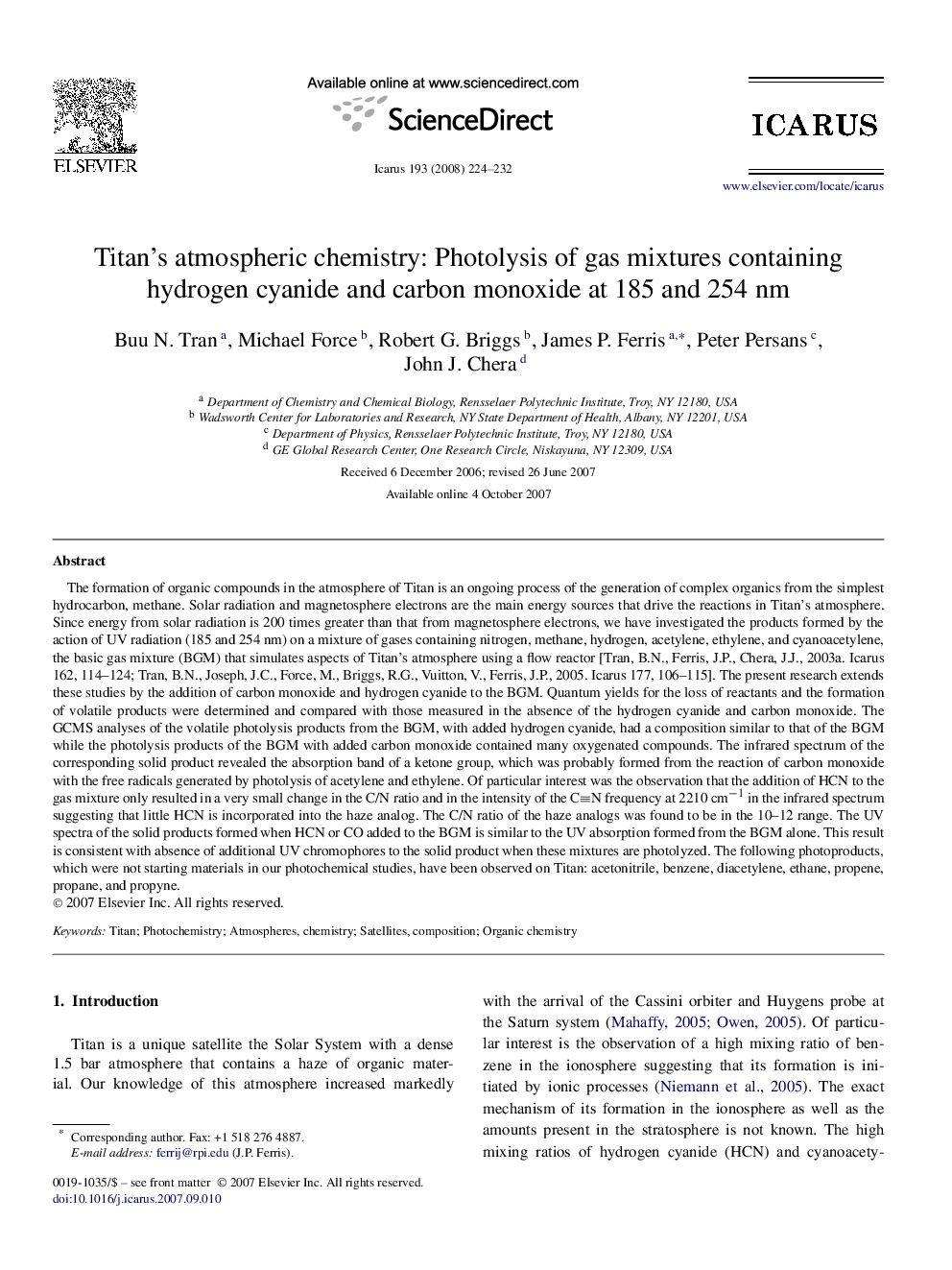| کد مقاله | کد نشریه | سال انتشار | مقاله انگلیسی | نسخه تمام متن |
|---|---|---|---|---|
| 1775402 | 1021192 | 2008 | 9 صفحه PDF | دانلود رایگان |

The formation of organic compounds in the atmosphere of Titan is an ongoing process of the generation of complex organics from the simplest hydrocarbon, methane. Solar radiation and magnetosphere electrons are the main energy sources that drive the reactions in Titan's atmosphere. Since energy from solar radiation is 200 times greater than that from magnetosphere electrons, we have investigated the products formed by the action of UV radiation (185 and 254 nm) on a mixture of gases containing nitrogen, methane, hydrogen, acetylene, ethylene, and cyanoacetylene, the basic gas mixture (BGM) that simulates aspects of Titan's atmosphere using a flow reactor [Tran, B.N., Ferris, J.P., Chera, J.J., 2003a. Icarus 162, 114–124; Tran, B.N., Joseph, J.C., Force, M., Briggs, R.G., Vuitton, V., Ferris, J.P., 2005. Icarus 177, 106–115]. The present research extends these studies by the addition of carbon monoxide and hydrogen cyanide to the BGM. Quantum yields for the loss of reactants and the formation of volatile products were determined and compared with those measured in the absence of the hydrogen cyanide and carbon monoxide. The GCMS analyses of the volatile photolysis products from the BGM, with added hydrogen cyanide, had a composition similar to that of the BGM while the photolysis products of the BGM with added carbon monoxide contained many oxygenated compounds. The infrared spectrum of the corresponding solid product revealed the absorption band of a ketone group, which was probably formed from the reaction of carbon monoxide with the free radicals generated by photolysis of acetylene and ethylene. Of particular interest was the observation that the addition of HCN to the gas mixture only resulted in a very small change in the C/N ratio and in the intensity of the CN frequency at 2210 cm−1 in the infrared spectrum suggesting that little HCN is incorporated into the haze analog. The C/N ratio of the haze analogs was found to be in the 10–12 range. The UV spectra of the solid products formed when HCN or CO added to the BGM is similar to the UV absorption formed from the BGM alone. This result is consistent with absence of additional UV chromophores to the solid product when these mixtures are photolyzed. The following photoproducts, which were not starting materials in our photochemical studies, have been observed on Titan: acetonitrile, benzene, diacetylene, ethane, propene, propane, and propyne.
Journal: Icarus - Volume 193, Issue 1, January 2008, Pages 224–232